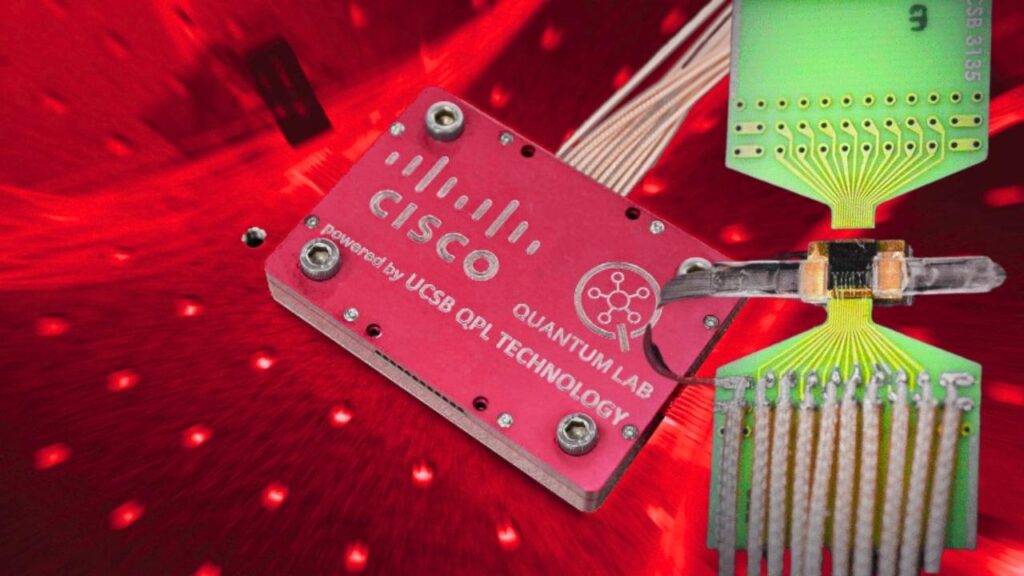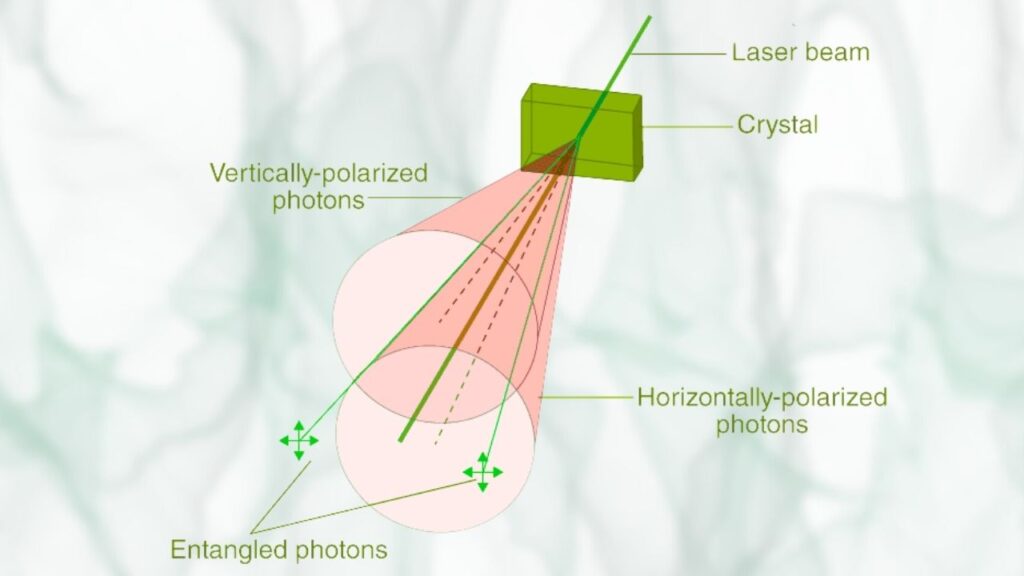Room Temperature Photonic Quantum Networking Chip: In a groundbreaking move for the future of computing, Cisco debuts its prototype Room Temperature Photonic Quantum Networking Chip—a technology poised to accelerate the arrival of practical quantum computing and the quantum internet. This innovation, developed in collaboration with UC Santa Barbara, is not just a technical milestone but a strategic leap, echoing Cisco’s historic role in building the classical internet.

Whether you’re a curious student, a tech enthusiast, or a seasoned IT professional, this article will help you understand what this chip means for the world and how it could shape the next era of digital infrastructure.
Why Cisco’s Quantum Networking Chip Matters
Quantum computing is often described as the next revolution in technology, promising to solve problems that are impossible for today’s computers. But quantum computers face a big challenge: they’re hard to scale. Most quantum systems require super-cold temperatures and can only operate in isolation. Cisco’s new chip changes the game by making it possible to connect quantum computers together—at room temperature—using light.
This chip is designed to work with existing fiber-optic networks, meaning it can be deployed much more easily than previous quantum technologies. By enabling quantum computers to “talk” to each other over long distances, Cisco is laying the foundation for a quantum internet—a network that could transform everything from cybersecurity to medicine, logistics, and beyond.
Room Temperature Photonic Quantum Networking Chip
| Feature/Stat | Details |
|---|---|
| Product | Cisco Quantum Network Entanglement Chip |
| Launch | May 2025, with Quantum Labs in Santa Monica, CA |
| Partnership | Developed with UC Santa Barbara |
| Operating Temperature | Room temperature (no extreme cooling needed) |
| Photon Entanglement Rate | Up to 1 million pairs/sec/channel; up to 200 million pairs/sec/chip |
| Fidelity | Up to 99% |
| Power Consumption | < 1 milliwatt |
| Integration | Works with standard telecom fiber-optic infrastructure |
| Use Cases | Distributed quantum computing, secure communication, time sync, location authentication |
| Official Website | Cisco Quantum Networking |
Cisco’s debut of its Room Temperature Photonic Quantum Networking Chip is a watershed moment in the journey toward the quantum internet. By making quantum networking practical, scalable, and compatible with existing infrastructure, Cisco is not just advancing technology—it’s shaping the future of global connectivity. Whether you’re a student, a business leader, or a technology professional, now is the time to start preparing for the quantum era. The next revolution in computing is closer than you think.
Understanding Quantum Networking: The Basics
What is Quantum Networking?
Think of the internet as a giant web connecting computers around the world. Quantum networking is similar, but instead of sending regular bits (ones and zeros), it sends quantum bits or qubits, which can exist in multiple states at once. This allows for faster, more secure communication and the ability to solve complex problems much more efficiently.

What Makes Cisco’s Chip Special?
- Room Temperature Operation: Most quantum devices need to be kept super cold, but Cisco’s chip works at room temperature, making it much easier and cheaper to use.
- Photonic Technology: The chip uses photons (particles of light) to create entangled pairs, which are the building blocks of quantum communication.
- High Performance: It can generate up to 200 million entangled photon pairs per second, with a fidelity (accuracy) of up to 99%.
- Energy Efficient: Consumes less than 1 milliwatt of power, making it suitable for modern data centers.
- Plug-and-Play: Works with existing telecom infrastructure, so companies don’t need to build new networks from scratch.
Why is Entanglement Important?
Entanglement is a quantum phenomenon where two particles become linked, so that whatever happens to one instantly affects the other—even if they’re far apart. This is the secret sauce behind quantum networking, allowing information to be shared securely and instantly over long distances.
How the Cisco Quantum Networking Chip Works
Step 1: Generating Entangled Photons
The chip uses a process called spontaneous four-wave mixing in semiconductor waveguides to generate pairs of entangled photons. Imagine it like a magic trick where two particles of light are created together and remain mysteriously connected, no matter how far apart they travel.

Step 2: Sending Entangled Photons Over Fiber
Because the chip operates at standard telecom wavelengths, these entangled photons can travel through the same fiber-optic cables that carry your internet traffic today. This means quantum networking can piggyback on existing infrastructure—no need for new cables or massive investments.
Step 3: Connecting Quantum Computers
By linking quantum computers with these entangled photons, Cisco’s chip allows them to work together as a team. This distributed approach means we can combine the power of many smaller quantum computers, rather than relying on a single, super-powerful machine.
Step 4: Enabling New Applications
With quantum networking, we can unlock applications like:
- Ultra-secure communication: Messages that can’t be intercepted or tampered with.
- Distributed quantum computing: Multiple quantum computers solving problems together.
- Precise time synchronization: Keeping clocks perfectly in sync across the globe.
- Location authentication: Verifying the exact location of devices for security.
Practical Advice: What Does This Mean for Businesses and Professionals?
For IT Leaders
- Start Learning Now: Quantum networking is coming fast. Begin educating your teams about quantum principles and potential impacts on your business.
- Assess Infrastructure: Since Cisco’s chip works with existing fiber, organizations can plan quantum upgrades without massive overhauls.
- Security Planning: Quantum networks promise new levels of security, but also new threats. Stay updated on post-quantum cryptography and prepare for a hybrid future.
For Students and Early Career Professionals
- Explore Quantum Basics: Understanding quantum mechanics, photonics, and networking will be valuable skills in the coming years.
- Get Hands-On: Look for internships or courses in quantum computing, photonics, or network engineering.
- Follow Industry Leaders: Companies like Cisco, IBM, and Google are at the forefront—keep an eye on their research and job postings.
For Researchers and Developers
- Open Ecosystem: Cisco’s chip is designed to be vendor-agnostic, meaning it can connect with different types of quantum computers (superconducting, ion trap, neutral atom, etc.).
- Collaborate: The new Cisco Quantum Labs in Santa Monica is a hub for research and development—consider partnerships or collaborative projects.
- Contribute to Standards: As quantum networking grows, there will be a need for new protocols and standards—get involved early.
Real-World Examples: How Could Quantum Networking Change Our Lives?
- Healthcare: Quantum networks could help researchers simulate complex molecules, speeding up drug discovery and personalized medicine.
- Finance: Secure quantum communication can protect sensitive transactions and prevent fraud.
- Logistics: Distributed quantum computing could optimize delivery routes, saving time and money for global supply chains.
- National Security: Governments can use quantum networks for tamper-proof communications and ultra-precise navigation systems.
Ultralight 3D-Printed Antennas Cut Weight By 94 Percent With Breakthrough Multi-Material Design
Scientists Combine Two Incompatible Materials Into One Groundbreaking Artificial Structure
Microsoft Declares the Beginning of the Logical Qubit Era in Quantum Computing
FAQs About Room Temperature Photonic Quantum Networking Chip
Q1: What is the Cisco Quantum Network Entanglement Chip?
A: It’s a prototype chip that creates entangled photons at room temperature, enabling quantum computers to connect over existing fiber-optic networks.
Q2: How fast is the chip?
A: It can generate up to 1 million entangled photon pairs per second per channel, and up to 200 million pairs per second per chip.
Q3: Does it need special cooling?
A: No, the chip operates at room temperature, unlike most quantum devices that require extreme cooling.
Q4: Can it work with today’s networks?
A: Yes, it’s designed to be compatible with existing telecom fiber infrastructure, making deployment practical and cost-effective.
Q5: When will quantum networking be available?
A: Cisco believes practical quantum computing and networking could be just 5–10 years away, thanks to innovations like this chip.
Q6: What industries will benefit first?
A: Healthcare, finance, logistics, and national security are likely to see early benefits from quantum networking applications.






